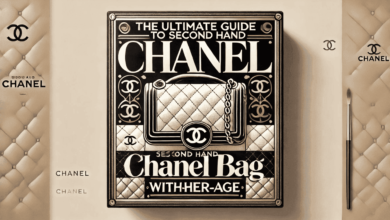The Nordic Fashion Industry: Trends, Innovations, and Sustainability

The Nordic fashion industry is an exciting and dynamic sector that reflects the unique cultural, environmental, and social values of the region. Known for its minimalist aesthetics, eco-conscious mindset, and commitment to quality, the Nordic fashion scene has made a significant impact on the global market. This article will explore the key characteristics, major players, trends, and challenges of the Nordic fashion industry, shedding light on why this region is becoming a global leader in fashion innovation, sustainability, and inclusivity.
The Rise of Nordic Fashion
Nordic fashion, while rooted in its cultural heritage, has evolved significantly over the past few decades. The industry in countries like Sweden, Denmark, Finland, Norway, and Iceland is recognized for its unique blend of modern design, functionality, and sustainability. Nordic fashion is also marked by its focus on high-quality materials, clean lines, and neutral tones, often embracing minimalism and practicality in design.
The global recognition of Nordic fashion brands began in the 1990s, and since then, the region has solidified its reputation as a fashion powerhouse. From the rise of fast-fashion giant H&M in Sweden to the innovative designs of Danish brand Ganni, the Nordic fashion industry is now an influential force on the global stage.
H&M: A Pioneer of Nordic Fashion
H&M, based in Sweden, is one of the most well-known global brands to emerge from the Nordic region. Founded in 1947, the company revolutionized fashion by offering affordable, trendy clothing to the masses. In recent years, however, H&M has faced increasing pressure to adapt to sustainability trends, and the brand has made considerable efforts to reduce its environmental footprint. With initiatives like the “Conscious Collection,” which features eco-friendly materials, and a commitment to increasing the use of sustainable fabrics like organic cotton and recycled polyester, H&M has become a key player in the movement toward sustainable fashion
Ganni: Redefining Danish Fashion
Ganni, a Danish brand founded in 2000, has also garnered international acclaim for its contemporary take on Scandinavian fashion. Known for its playful, yet minimalist aesthetic, Ganni blends high-quality fabrics with bold prints, creating designs that resonate with a youthful, fashion-forward audience. Ganni is especially popular among environmentally-conscious consumers due to its commitment to sustainability. The brand has pioneered circular fashion initiatives, such as its “Ganni Repeat” service, where customers can rent garments instead of purchasing them. This innovative approach helps reduce waste and encourages more sustainable consumption
Filippa K: Quality and Timeless Design
Filippa K, another prominent Swedish fashion brand, is known for its minimalist approach and focus on timeless, high-quality designs. The brand emphasizes a philosophy of “slow fashion,” encouraging customers to invest in durable, long-lasting pieces rather than fast, disposable trends. Filippa K’s commitment to sustainability extends to its use of organic materials, responsible sourcing, and ethical labor practices
Sustainability in the Nordic Fashion Industry
Sustainability is arguably the most important trend shaping the Nordic fashion industry. Environmental issues are at the forefront of the region’s cultural discourse, and this has influenced the way fashion brands operate. Nordic fashion has long been associated with eco-friendly practices, and this emphasis on sustainability continues to grow in importance.
Eco-Friendly Materials
One of the key aspects of sustainability in Nordic fashion is the use of eco-friendly materials. Many brands in the region are turning to sustainable alternatives to traditional textiles. For example, organic cotton, recycled wool, and eco-friendly dyes are increasingly used in collections by brands like Filippa K and Ganni. These materials not only reduce the environmental impact of production but also promote better labor practices by supporting fair wages and working conditions
Additionally, many Nordic fashion companies are turning to alternative fabrics, such as hemp, bamboo, and recycled polyester, to further minimize their ecological footprint. These innovations are helping the fashion industry move toward more sustainable practices while ensuring that consumers do not have to sacrifice style for sustainability.
Circular Fashion Models
Circular fashion is another key element of sustainability in Nordic fashion. This approach focuses on creating a closed-loop system where garments are recycled, reused, and repurposed to reduce waste and extend the lifespan of clothing. Brands like Nudie Jeans and Ganni have embraced circular fashion by offering repair services and encouraging consumers to recycle or donate their clothes. Nudie Jeans even offers a free repair service to customers to extend the life of their garments, while Ganni has introduced a garment rental service as part of its sustainability efforts
Circular fashion also involves designing clothes that are easier to repair, recycle, and reuse. Nordic brands are increasingly prioritizing durability and functionality in their designs, ensuring that clothing can withstand multiple cycles of use and repurposing. This contrasts sharply with the fast-fashion model, which encourages frequent disposal of garments and contributes to the growing problem of textile waste.
Ethical Labor Practices and Transparency
In addition to focusing on sustainable materials and circular fashion models, Nordic fashion brands are committed to ethical labor practices. Many companies in the region are transparent about their supply chains, ensuring that their workers are paid fair wages and work in safe conditions. Transparency is a core value in Nordic fashion, with brands like Stella McCartney and Reformation providing detailed information about their production processes and sourcing practices
This transparency not only helps consumers make more informed purchasing decisions but also puts pressure on other brands to follow suit. As environmental and ethical concerns continue to shape consumer behavior, it is likely that more fashion companies around the world will adopt similar practices.
Digital Innovation and E-Commerce in Nordic Fashion
The Nordic fashion industry has embraced digital innovation to reach a wider audience and adapt to changing consumer behaviors. The region’s high level of internet penetration and tech-savvy population has made it easier for brands to capitalize on e-commerce and social media platforms.
The Role of Social Media
Social media platforms like Instagram, Pinterest, and TikTok have become key tools for Nordic fashion brands to engage with consumers. Brands use these platforms to showcase their collections, share behind-the-scenes content, and connect with their audience in real-time. Influencers and fashion bloggers play an important role in shaping the fashion preferences of Nordic consumers, further driving the success of brands like Ganni, which has cultivated a strong online following
The ability to showcase new collections digitally has also become essential for Nordic brands. With fashion weeks increasingly going digital and virtual runway shows becoming a norm, brands can now reach global audiences without the need for physical events. This shift to digital platforms has made it easier for Nordic brands to build a strong international presence and connect with a broader customer base.
The Growth of E-Commerce
E-commerce has experienced significant growth in the Nordic fashion industry, with both established and emerging brands using online platforms to sell their products. This growth is particularly notable among younger consumers, who prefer shopping online due to the convenience it offers. Brands like ASOS, Zalando, and H&M have invested heavily in their digital platforms, allowing consumers to browse and purchase clothing from the comfort of their homes
The rise of online shopping has also given consumers access to a wider variety of brands, including smaller Nordic labels that may not have a physical presence in international markets. This shift to e-commerce has democratized fashion, enabling smaller brands to reach global audiences without the financial burden of traditional retail spaces.
Gender-Neutral Fashion in Nordic Countries
Another significant trend in the Nordic fashion industry is the rise of gender-neutral fashion. The region’s progressive social values have influenced its approach to fashion, with many brands creating collections that transcend traditional gender categories. This inclusivity is reflective of the Nordic region’s commitment to gender equality and individual expression.
Unisex Collections
Many Nordic fashion brands are creating unisex collections that are designed to be worn by people of all genders. Acne Studios, for example, is known for its unisex clothing, which is designed with minimalistic aesthetics and functional designs that appeal to a diverse range of consumers. Other Nordic brands, such as Our Legacy and Henrik Vibskov, also incorporate gender-neutral styles into their collections, further promoting inclusivity within the fashion industry
Gender-neutral fashion is not just about clothing, but also about the way individuals use fashion to express their identities. In the Nordic region, fashion is seen as a form of self-expression, allowing individuals to break free from societal norms and dress in a way that feels authentic to them. This trend reflects the growing importance of inclusivity, equality, and personal empowerment in Nordic fashion.
Challenges Facing the Nordic Fashion Industry
Despite the success of the Nordic fashion industry, there are several challenges that brands must navigate. One of the primary challenges is competition from fast fashion brands, which offer low prices and quick turnaround times. These brands are able to produce garments quickly and cheaply, often at the expense of sustainability and labor practices.
Another challenge is the seasonal nature of fashion in the Nordic countries. Harsh winters and short summers mean that there is a limited window for certain types of clothing to be worn, and the industry must adapt to these changing seasons. Fashion brands must also balance the demands of practicality with the need for stylish designs that appeal to consumers year-round.
Finally, the ongoing challenge of ensuring sustainability in the face of global demand for cheap, fast fashion remains a key issue. While many Nordic fashion brands are leading the way in terms of eco-friendly practices and transparency, the industry as a whole must continue to evolve to meet the expectations of consumers who demand both sustainability and style.
FAQ: Nordic Fashion Industry
What are the key characteristics of Nordic fashion?
Nordic fashion is characterized by minimalist designs, high-quality materials, and a strong emphasis on functionality. It often incorporates neutral colors, clean lines, and practical, durable fabrics suited for the region’s climate. Sustainability is also a major driving force, with many brands focusing on eco-friendly materials and ethical production practices.
Which brands are leading the Nordic fashion industry?
Prominent Nordic fashion brands include H&M, Ganni, Acne Studios, Filippa K, and Nudie Jeans. These brands are known for their innovative designs, focus on sustainability, and ability to combine modern trends with traditional craftsmanship.
How does sustainability play a role in Nordic fashion?
Sustainability is at the core of Nordic fashion, with brands focusing on using eco-friendly materials, such as organic cotton and recycled fabrics. Many Nordic brands also embrace circular fashion models, where clothing is designed to be recycled, rented, or reused. Additionally, ethical labor practices and transparency are prioritized, ensuring that production processes are as sustainable as possible.
What is circular fashion in the Nordic fashion industry?
Circular fashion refers to a closed-loop system where garments are designed to be reused, repaired, or recycled rather than discarded. Nordic brands like Ganni and Nudie Jeans have pioneered circular fashion practices, offering garment rental services and repair programs to extend the life of clothing and reduce waste.
Is gender-neutral fashion common in Nordic fashion?
Yes, gender-neutral fashion is increasingly popular in the Nordic fashion industry. Many brands, such as Acne Studios and Henrik Vibskov, create collections that transcend traditional gender boundaries, promoting inclusivity and self-expression.
How has digital innovation impacted Nordic fashion?
Digital innovation has significantly impacted the Nordic fashion industry by enabling brands to reach a global audience. E-commerce platforms, social media, and virtual fashion shows have allowed Nordic brands to grow internationally, while also engaging consumers directly through online channels.
What challenges does the Nordic fashion industry face?
Despite its success, the Nordic fashion industry faces challenges like competition from fast fashion brands, the seasonal nature of the market, and the ongoing need to balance sustainability with global demand for inexpensive, trendy clothing. Additionally, the industry must continue to adapt to changing consumer expectations, particularly regarding eco-friendly and ethical practices.
Conclusion
The Nordic fashion industry stands at the forefront of a global movement toward sustainability, inclusivity, and innovation. With brands like H&M, Ganni, and Filippa K leading the charge, the region has demonstrated that it is possible to blend high-quality, stylish designs with eco-conscious values. Sustainability, circular fashion, and ethical production are becoming integral to the way Nordic brands operate, setting a powerful example for the rest of the fashion world to follow. As digital innovation and gender inclusivity continue to shape the industry, the Nordic fashion scene will undoubtedly remain a driving force in the global fashion landscape. With its commitment to both style and sustainability, the future of Nordic fashion looks bright and inspiring.




ag9lvx